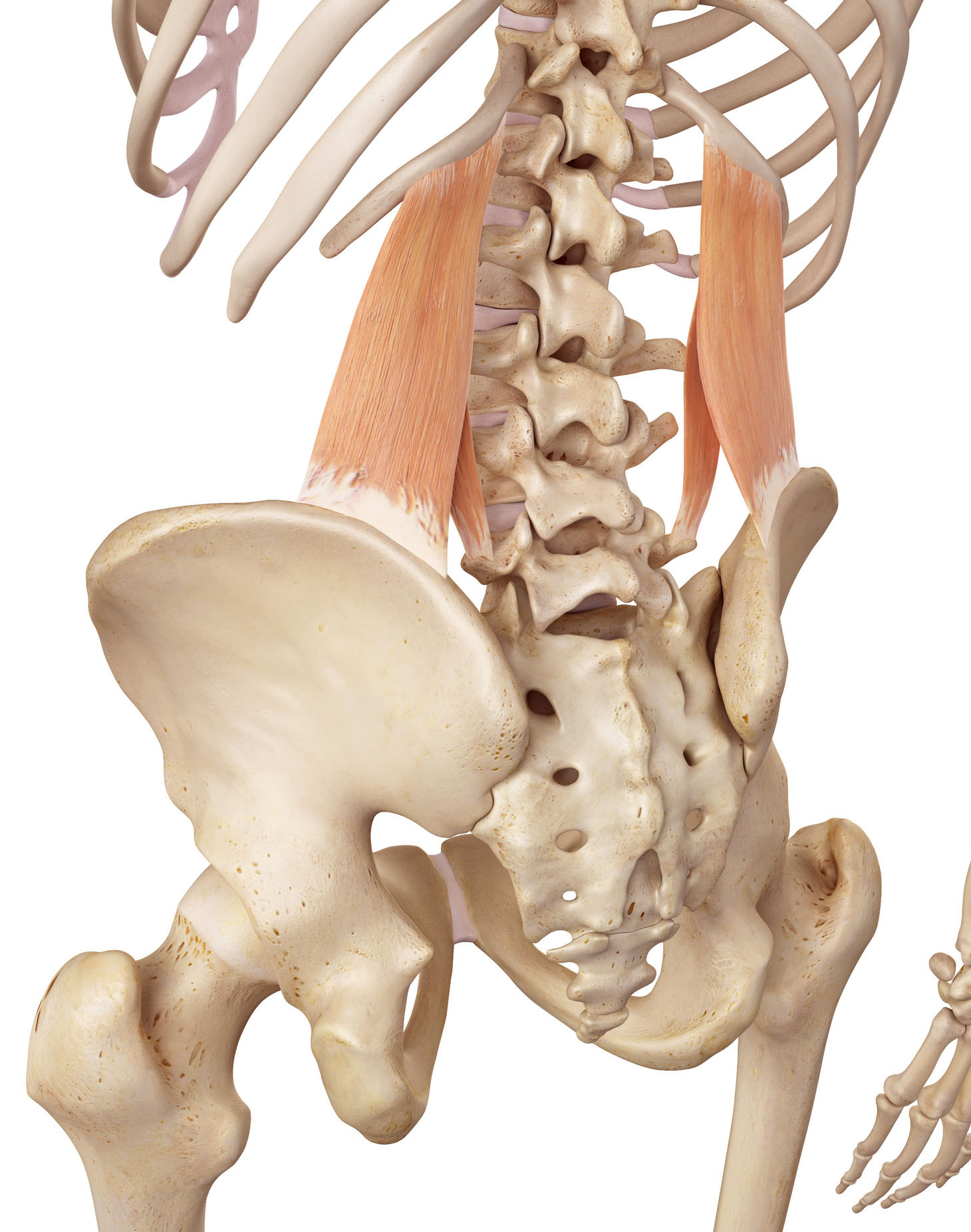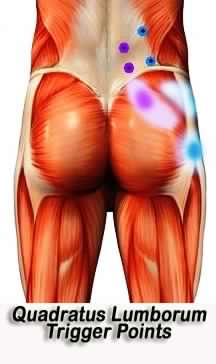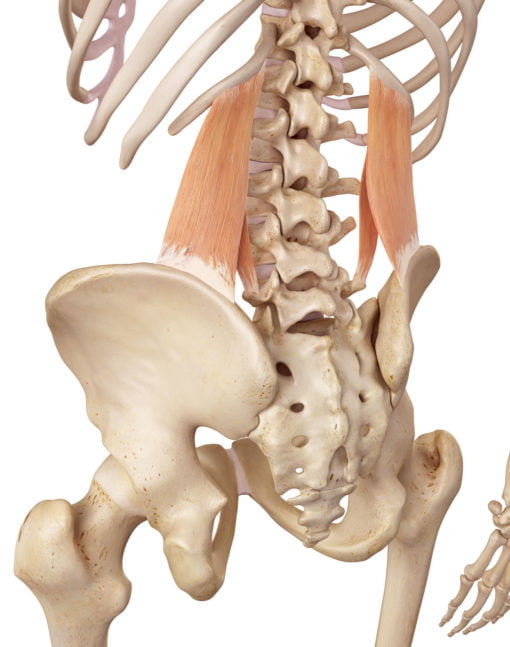
Have you ever been for a deep tissue or sports massage and when the massage therapist gets to your lower back, you feel like you want to shoot through the roof?
The spot you are feeling is not just any spot, it has a very specific position. If you feel your back muscles (let’s call it fillet steak) or the thick strip of muscles running right down your spine, then just at the point where you feel that strip ends laterally on your back, this is where you are going to find the QL.
But it is not that simple! So as you get to the lateral point of your back muscles (erector spinae), you now need to find the sensitive point between the 12th rib and the iliac crest of the pelvis.

Still staying lateral of the erector spinae at this point, you now want to take your thumb and press down towards your stomach and inwards towards your spine simultaneously. Get the feeling of pressing deep and then trying to lift the erector spinae up. You can even give a gentle push up towards the 12th rib. YIP, YOU JUST FOUND IT!
If you do this properly, you are going to feel that QL for sure.
You see the problem with the QL is that it is the ONLY back muscle that is situated ONLY in the lower back. It has quite a few functions i.e. stabilizing the ribs on inhalation, anteriorly tilting the pelvis, hiking the hip causing a lateral pelvic tilt and rotation of the spine.

So what is its problem?
- It does not like a constant anterior tilt due to the fact that it shortens in this position. If the rest of the spinal muscles are weak then the QL ends up dominating in this position.
- It does not like a constant posterior tilt because it has to hold the pelvis from the posterior side in its eccentric position.
- It does not like a constant lateral tilt as it shortens in this position.
The QL will spasm if any one of these are present:
- Weak erector spinae
- Weak multifidus
- Weak gluteus medius
- Constant posterior, anterior or lateral tilt
- Tight hip flexors
- Lengthened lower abdominals
- Lengthened hip flexors
- General low muscle tone of the hip stabilizers and glutes
When any muscle goes into spasm it is trying to tell you one of four things:
- It does not like the constant length that it has to maintain
- It does not like the constant shortening that it has to maintain
- It needs assistance from the other muscles that produce the same movement
- It needs assistance from the other muscles that add stability to the joint/s in question
It is up to the professional to decipher which one or more of the 4 points above are relevant to the client.
It can all be improved through client specific training with the use of the Kinetic Precision technique as taught on Of-CourseOnline.
How do we emphasis Longevity in training? Through precision in training and movement.
You can watch this in action by viewing the Why Behind Compensations Course or The hip home program course
It is time to get rid of those constant spasms and start with programs that are focused on movement and exercise to promote longevity.
That is the healthy truth!






